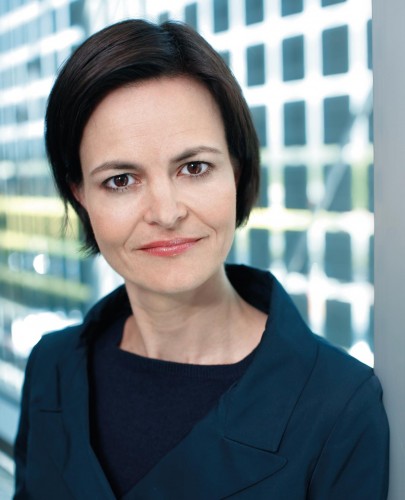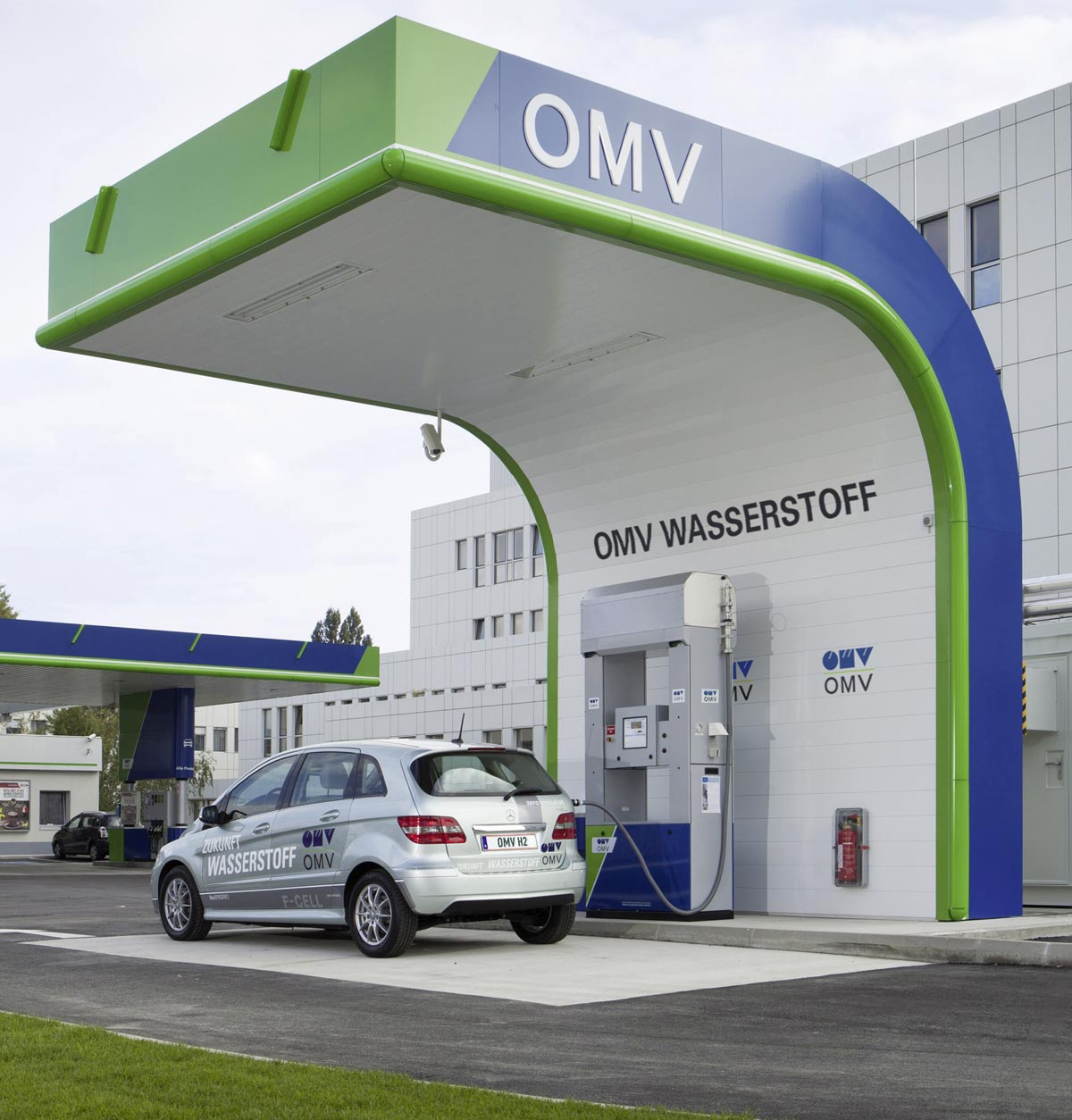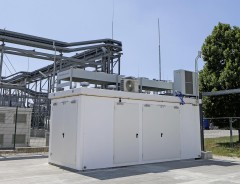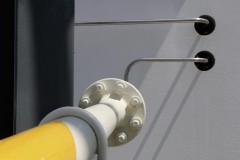The aim of the power-to-gas development thrust is to couple the electricity and natural-gas grids together. A key element in the forthcoming system are flexible, efficient, cost-effective electrolysers. An Austrian consortium made up of OMV, EVN, FRONIUS International GmbH, HyCentA Research GmbH and the Energy Institute at the Johannes Kepler University (JKU) Linz is currently researching how to generate “green hydrogen” by means of a novel type of high-pressure electrolyser, how to feed the hydrogen generated into the natural-gas grid, and how to fill and employ it in motor vehicles.
To this end a pilot plant with a 100 kW rating has been set up at the OMV site in Auersthal (Lower Austria), where future business cases (from the perspective of electricity and of the natural-gas grid operator) can be simulated experimentally. In addition, the physical effects of feeding hydrogen into an OMV gas pipeline are investigated. This is the first pilot plant of this type and size anywhere in the world. The project is intended to gather experience ranging from the planning phase to day-to-day operation. Meanwhile legal, economic and ecological assessments will be carried out and various business models laid out in preparation for the actual rollout.
Power-to-gas: How wind power is stored (Video: OMV, www.omv.com / only german version available)
Pioneering electrolytic process
The high-pressure PEM Proton Exchange Membrane electrolyser specially developed by FRONIUS International GmbH is an industry first, delivering as it does at a pressure for which expensive compression downstream is normally necessary. The PEM electrolyser generates high-purity hydrogen at 163 bar; its modular design makes it suited to ultra-dynamic operation, with no risk of shutdowns in connection with fluctuating levels of wind or PV-generated power. This high pressure is mainly needed for feeding into the high-pressure grid, or where such units are installed at a filling station.
Linking up to gas infrastructure
The electrolyser is being tested with various different load profiles (from renewable sources of energy). Investigation covers base load operation, operation as a function of the price of electricity, accommodating surplus power, supplying grid services and providing operating reserve. A simulation model based on EVN real-life data from wind farms and local natural-gas grids regulates power supply and hydrogen generation in line with the various operating models and frameworks under investigation. As a test, the hydrogen generated is fed straight into the OMV high-pressure grid via the Auersthal compressor station. The flowrates involved are such that the detection threshold would not be reached; so a special mixing line has been installed, making it possible to set ratios between 1 % and 10 %. This line is also used to supply the gas mixture to the HylyPure facility (see page 5).
With hydrogen being fed into a natural-gas pipeline, control systems and quality control can be improved. The aim is to identify how well the gas infrastructure (transit and distribution grid) copes with hydrogen, and how much “green hydrogen” can be stored in the Austrian natural-gas grid.
Opening of the Power-to-Gas Pilot-plant in Austria 19.8.2015 – Statement Federal Minister Alois Stöger (only german version available)
Hydrogen to fuel vehicles
Part of the hydrogen generated in the pilot facility is compressed to 200 bar and filled in cylinders. This high-purity hydrogen is supplied to an OMV hydrogen filling station; in future it should be available for other research projects, too. Supplying hydrogen in cylinders to industry or to filling stations is a real possibility. There are plans for going all the way to 350 bar. Then the filling process will not need a compressor.

CEO, FRONIUS International GmbH, Photo: FRONIUS International GmbH



